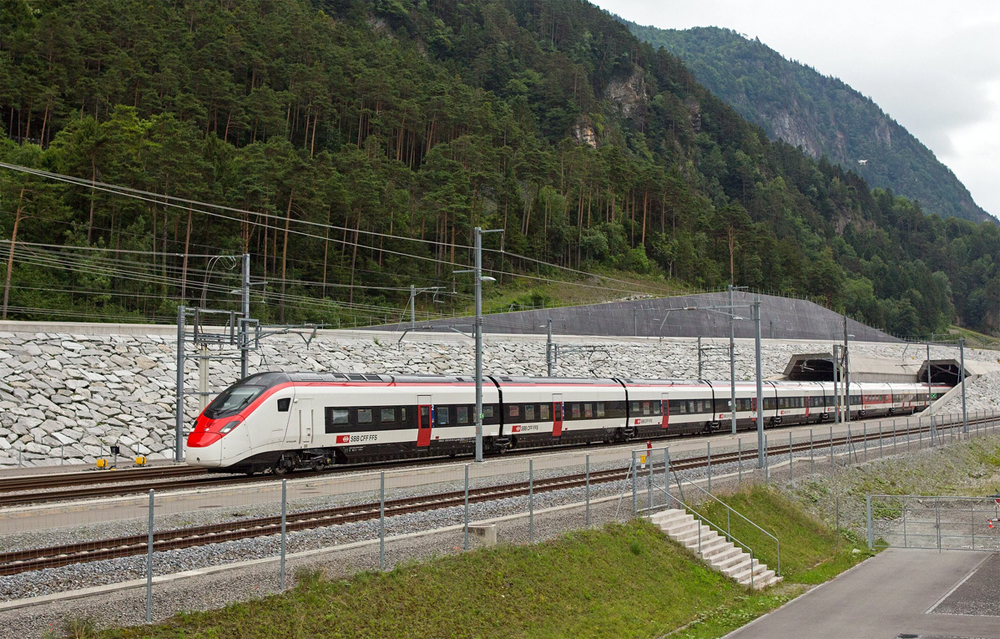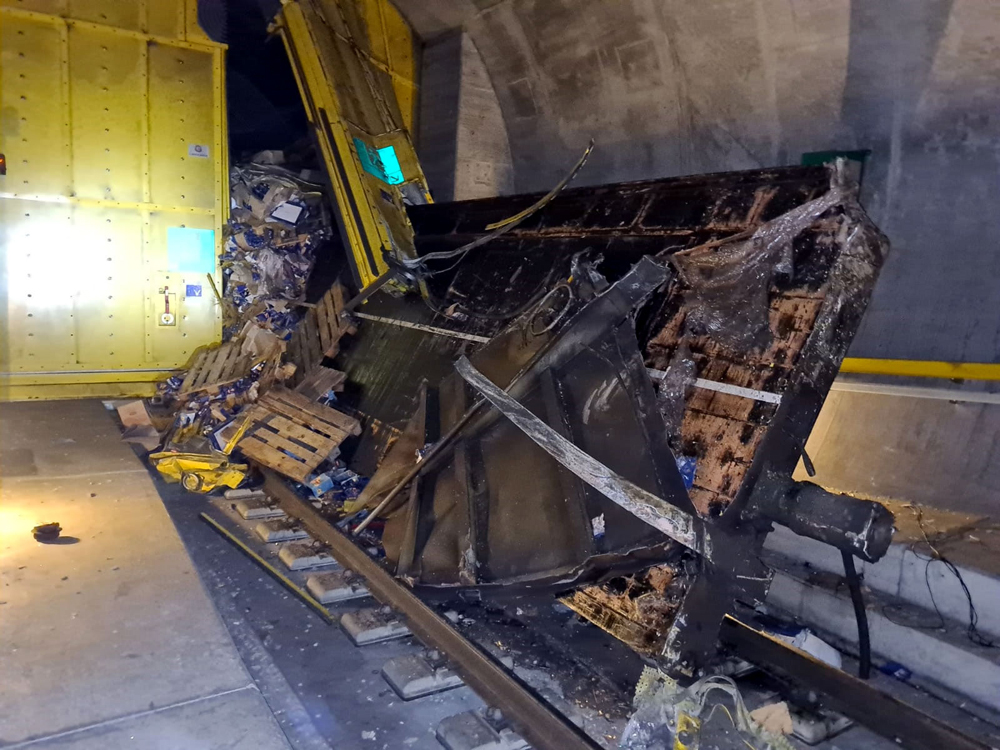
POLLEGGIO, Switzerland — More than a year after a freight train derailment inflicted extensive damage, the Gotthard Base Tunnel — the world’s longest rail tunnel — fully resumed regular operations today, ending an extensive, and expensive, period of repairs and reroutes for one of Europe’s main north-south rail arteries.
For the first time since August 2023, half-hourly passenger service has been restored between German-speaking Switzerland and the Italian-speaking canton of Ticino, as well as service to and from Italy without a change of trains. The 20% of freight trains that had been moving on the historic route over Gotthard Pass will now return to the route to the Base Tunnel, saving 60 to 75 minutes.
“We are delighted that our customers can travel more quickly between German-speaking Switzerland and Ticino again and benefit from an even more frequent service,” Vincent Ducrot, CEO of the Swiss Federal Railways, or SBB, said a press conference today, as reported on SBB’s web page on tunnel updates. “On behalf of SBB, I would like to thank you, as well as our freight customers, for your patience and understanding over the last 13 months. Many employees have worked under difficult conditions, day and night. I would also like to thank them very much.”
More than 4 miles (7 kilometers) of tunnel infrastructure had to be rebuilt after the Aug. 10, 2023, derailment involving a wheel that broke on a freight car while a train was passing through the tunnel. The lengthy process reflected not only the extent of the damage and the logistical limitations of working within the 35.5-mile (57.1-kilometer) tunnel, but the challenges of working conditions. The ambient temperatures within the tunnel at the derailment site is about 104 degrees Fahrenheit (40 Celcius); workers had to wear special devices to warn of overheating.

The damage was extensive because the freight train is believed to have traveled some 7 kilometers after the freight car’s wheel fractured before finally derailing when it reached a switch at the Faido multifunction station, one of the crossover points within the tunnel between the two bores [see “Broken wheel blamed …,” Trains News Wire, Aug. 14, 2023]. Twenty-three of the train’s 32 cars derailed; an airtight door crucial to tunnel safety measures was destroyed as a result, forcing the full closure of the tunnel until a temporary door, used during maintenance, could be installed to seal the crossover.
Closure of the tunnel forced the rerouting of all passenger traffic to the historic Gotthard Pass route, adding about an hour to travel times. The reroutes also significantly reduced capacity, since the 1882-vintage Gotthard Tunnel at the top of that 3,776-foot pass had insufficient clearance for the bilevel passenger equipment used through the base tunnel. Similarly, clearance and capacity issues limited the amount of freight that could be rerouted over Gotthard Pass, a significant issue given that the base tunnel handled about 70% of freight traffic through the Swiss Alps. Some traffic went on other routes; some was held; some was moved by truck, adding to already significant road congestion.
The east tube was reopened to freight traffic on Aug. 23, with a fleet-movement plan allowing about 100 trains per day to pass through [see “One tube of Gotthard Base Tunnel reopens …,” News Wire, Aug. 23, 2023]. Passenger trains were initially not allowed to return because the loss of the second bore eliminated many of the evacuation methods that have been part of the tunnel’s safety plans; new plans had to be approved before the federal government would allow extremely limited passenger use of the east tube beginning at the end of September 2023 [see “First passenger trains to return …,” News Wire, Sept. 28, 2023]. Passenger use of the base tunnel has gradually increased, but most passenger traffic has continued to use the Gotthard Pass route until today.
SBB’s most recent estimate of the cost of the incident, including repairs and lost revenue, is about 150 million Swiss francs, currently about $176 million.
The tunnel accident has confirmed the ongoing importance of the historic Gotthard Pass line, also known as the panoramic route, with SBB and the Swiss government having committed to spend some 1 billion Swiss francs to renovate the line beginning in 2025.














Return to the old/usual normal… Congratulations to the SBB teams involved!
Dr. Güntürk Üstün
Excellent comments on the loss of route flexibility in the US.
A detour route was PRR’s specific reason for rebuilding and reopening the New Portage Branch between Hollidaysburg and Gallitzin, bypassing the PRR Main Line between Altoona and Gallitzin via Horseshoe Curve. CR removed it and US 22 took some of the ROW.
The last paragraph brought me in mind of all the once-useful detour routes that have been eliminated in the US.
Growing up on the Pennsylvania’s St. Louis line in Illinois I remember occasionally seeing New York Central’s Southwestern Limited detouring due to a derailment. Now the NYC’s St. Louis line is abandoned between Pana and Paris, Illinois.